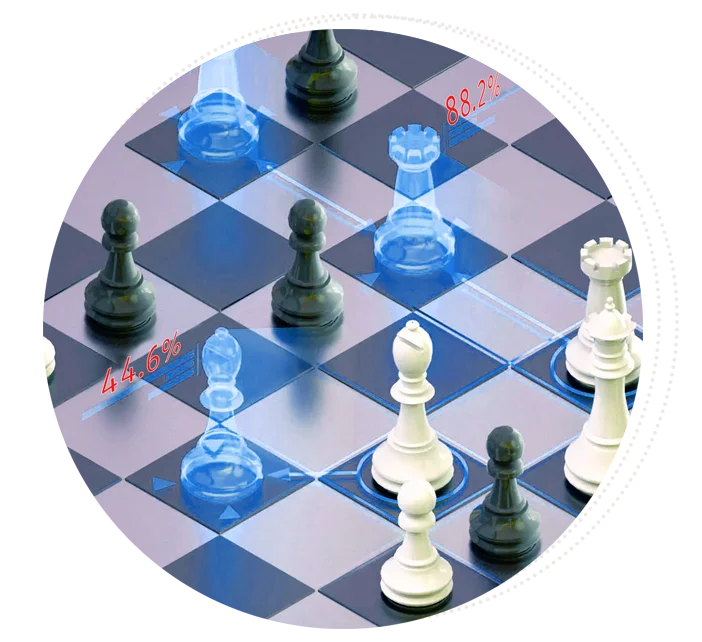
Authors: Cristian Zorrilla (Interaction Designer) – Ivan Caballero (AI Designer) – Carla Acosta (Visual Designer)
Nvidia pushes hard to democratise Artificial Intelligence; in Equinox AI Lab we’re excited about every new announcement. On this note, we want to focus on three main talks we find extremely interesting from the Nvidia GTC 2023.
AI Best Practices for Successful Implementations
The first was the “AI Best Practices for Successful Implementations” session. The interviewer Bob Venero, CEO at Future Tech Enterprise, met John Russell, VP & CIO at Northrop Grumman Corporation. They talked about the key points of integrating AI into organisations.
At the beginning of the session, Bob asked about the value of AI in business. John explains that it was crucial to his business that they campaigned to get people to know and be involved in AI, even if they were experts. They wanted AI to be part of every area around the company. He adds that AI could let them take advantage and understand micro-transactions across their business processes because AI can give you the information you need to make informed decisions and accelerate productivity rather than jockey the data manually.
So, humans can do what we should be doing and let technology bring, contextualise, and visualise the information for us. Then, he highlighted that this is not letting a machine take complicated & complex decisions for us, and John emphasises that. For him, educating people on AI is essential because they believe it will replace us. Still, AI will do things we don’t want to do, saying that “what we want to do is move the things that are dull, dirty and dangerous down to the machines and allow you (humans) to do the things that are more upscale.”
Later, John gives two points to consider when implementing AI. The first is to consider privacy. You need to be aware of what data you expose to the machine, their possible outcomes, and what the machine will do across a company. So having an AI accountability team is mandatory. Second, be responsible. AI is a tool; as with any other tool in a toolbox, you need to be accountable.
Finally, he resumes the session with the top business quality and speed outcomes made through AI. Again, AI can bring information to you very quickly. So, if you have a problem, you can quickly spot and understand it. Then, you can have better decisions and processes that enhance your upfront and back-end business. So, by integrating AI within your operations, you get a quality check in every part of the life cycle, accelerating and driving quality.

Nvidia GTC 2023: Click here to watch the complete session
How Generative AI is Transforming the Creative Process
The second one was “How Generative AI is Transforming the Creative Process” in this talk, Bryan Catanzaro from Nvidia interviews Scott Belsky from Adobe. They discussed the future of design and art processes and focused renewal announcement of the partnership between Adobe and Nvidia.
Adobe couldn’t lose the AI race; its products would soon be obsolete if they didn’t evolve with the trendy and revolutionary AI generative models, and they did very well. In this session, Scott told us how Adobe is implementing AI in legendary products like Photoshop, Illustrator, Adobe Express and Firefly (The generative adobe platform).
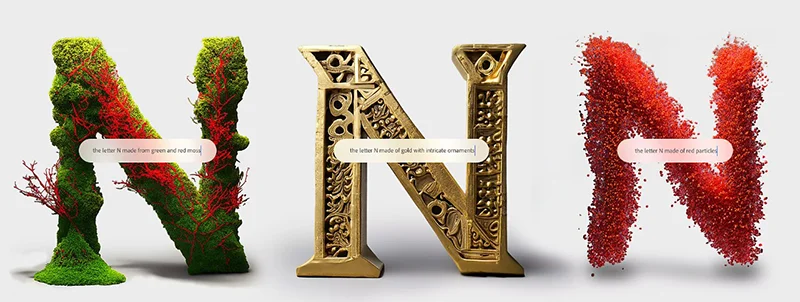
Taken from Adobe Firefly https://www.adobe.com/sensei/generative-ai/firefly.html
Adobe plans to allow users to describe what they want just with text input; you will be able to create images and edit them with simple commands such as “remove the background”, “draw a dragon in Times Square”, “replicate the dog”, or “cut my silhouette”. People will be able to go further in media creation, not only images but videos, 3d models, social media content and animations will be impacted.
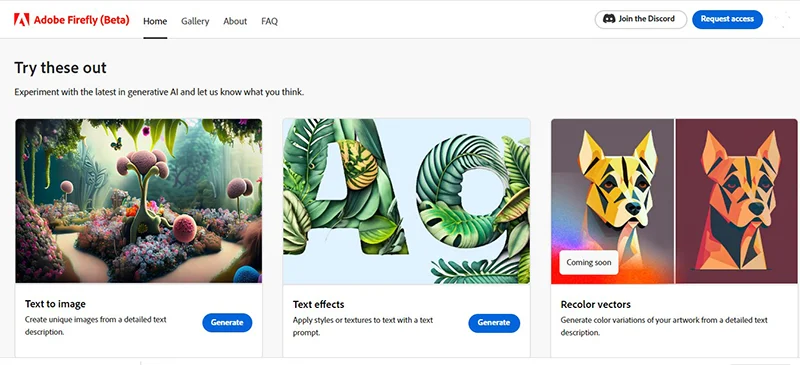
Adobe Firefly (AI generative tool)
They also researched which problems users had with their products and are mitigating them with AI to make them more usable and overall faster. These new assets will allow rookies to create their ideas painlessly as tools will be easier to use; at the same time, it will benefit designers and professionals because a new world of opportunities and creativity will be opened for them.
Scott and Bryan mentioned the natural fear these implementations could cause in creatives, but they also said that it is “normal” to fear new technology (every time in human history, we’ve feared it) and that we will soon get the most out of it.
It is “normal” to fear new technology every time in human history, we’ve feared it.
Scott Belsky (Adobe)
3D by AI: Using generative NeRFs for building virtual worlds
The third one was “3D by AI: Using generative NeRFs for building virtual worlds”. In this talk Gavriel State from Nvidia explained how Artificial intelligence can be used in many areas of 3D production, from asset creation, behaviour, animation and mixed realities, especially with Neural Radiance Fields (NeRFs) technology which creates hyper-realistic 3D environments.
This technology works by teaching artificial intelligence to recognise lights within a specific image, which achieves hyper-realistic images, also speeding up the image rendering process, being able to render a very high-quality model in as little as 30 seconds, allowing to create 3D environments in almost instantly just by learning the behaviour of light.
Another great advantage of Neural Radiance Fields (NeRFs) is that they can decompose images and separate them into sets, like this picture of the flower.

Flower image decomposed
It can also achieve much more realistic reflections in 3D materials, which are used in video games, special effects and animated films.
In addition, when it comes to texturing, a 3D model achieves a much more realistic finish, as it can understand the texture of the normals and the light of the objects in a much more accurate way; not only that, it is also possible to have a fully textured 3D object and it can do the reverse process where it is possible to separate the texture from the model.
The most exciting usability of Neural Radiance Fields (NeRFs) is to allow you to train the artificial intelligence with an object, and it will be able to generate and adjust it in a 3D space without the need to use 3D, and this allows you to change the perspective of the 2D object, within a 3D area.
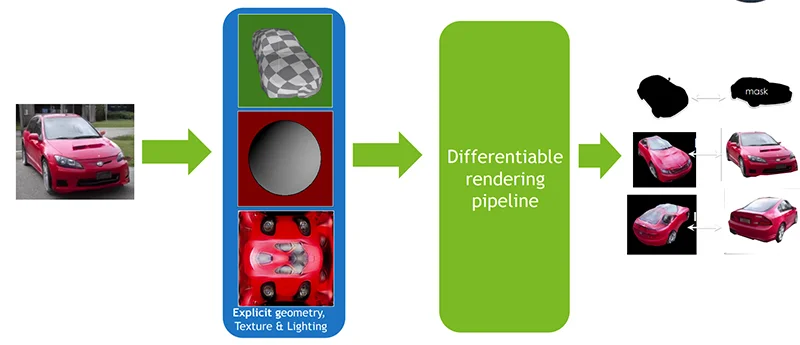
Example of 2D image to 3D image
In addition, it can learn about physics just from a video; an example of this is a tennis match, the artificial intelligence learned from the game and was able to reconstruct the movement and simulate the physics of that tennis match, which will be a potent tool shortly.
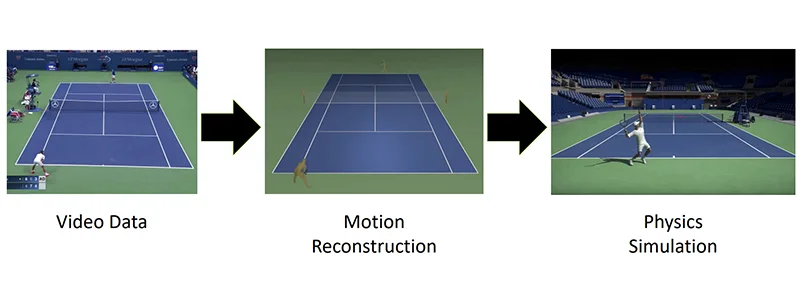
AI 3D simulation example
In conclusion, Nvidia is such a significant referent nowadays. We were glad to participate in the Nvidia GTC 2023 event and can’t wait to experience all these new implementations in different creative and business processes.

Cristian Zorrilla – Interaction Designer

Ivan Caballero – AI Designer

Carla Acosta – Visual Designer
EQUINOX
what’s ai?
Discover what is AI and how it will become revolutonary in the industry
